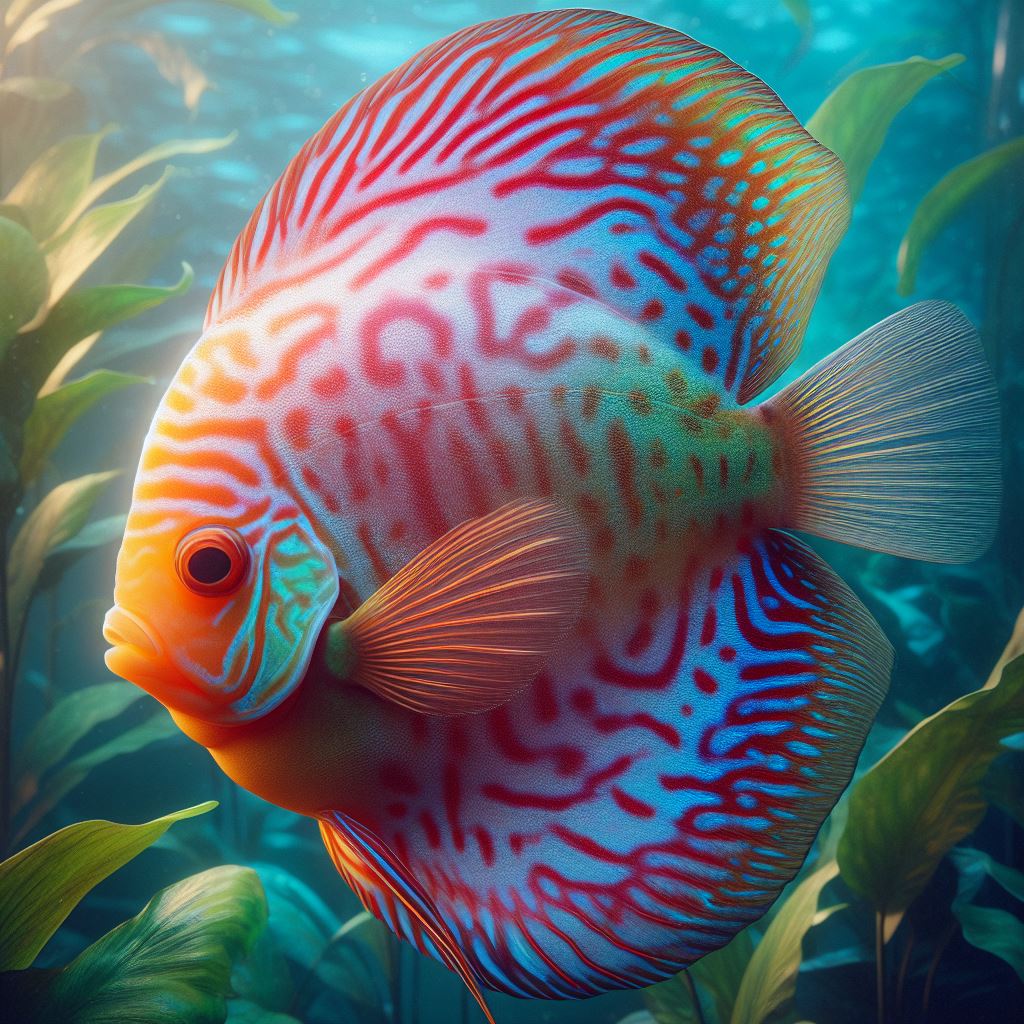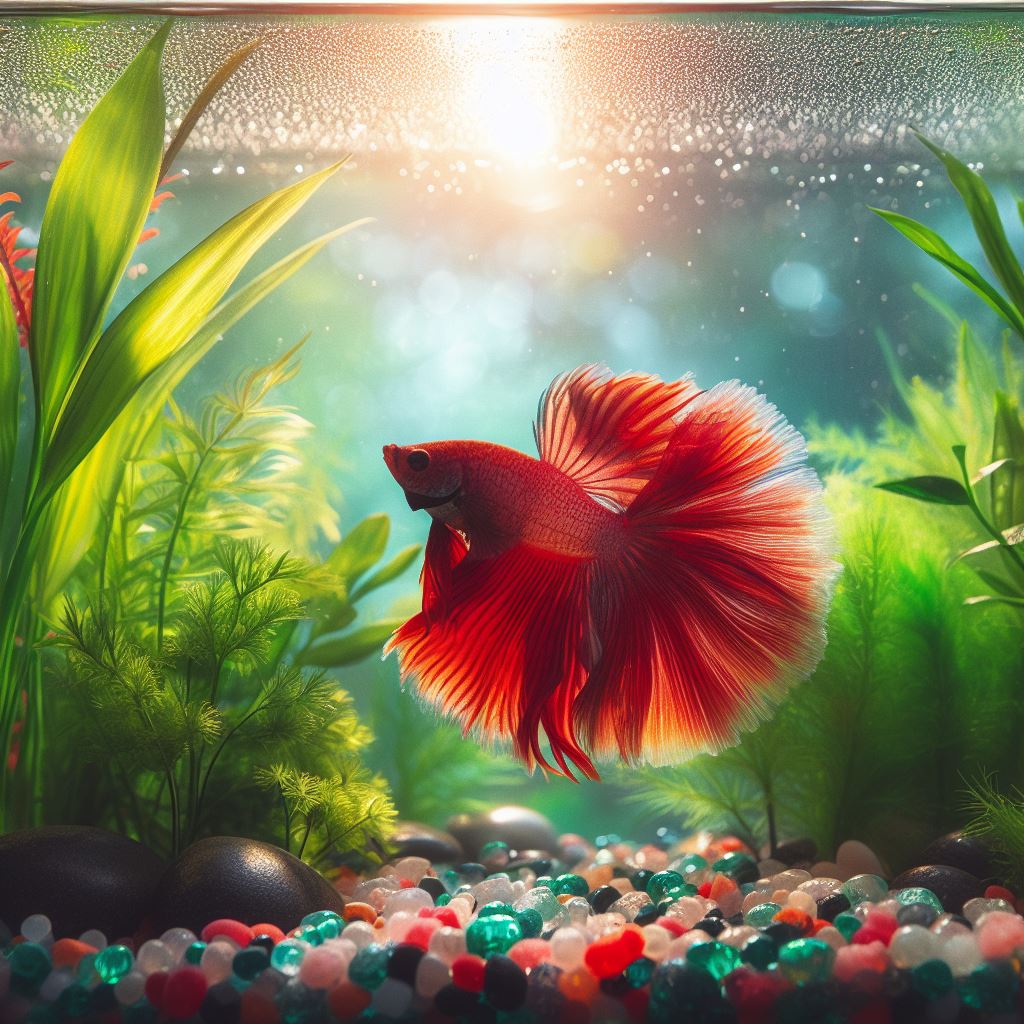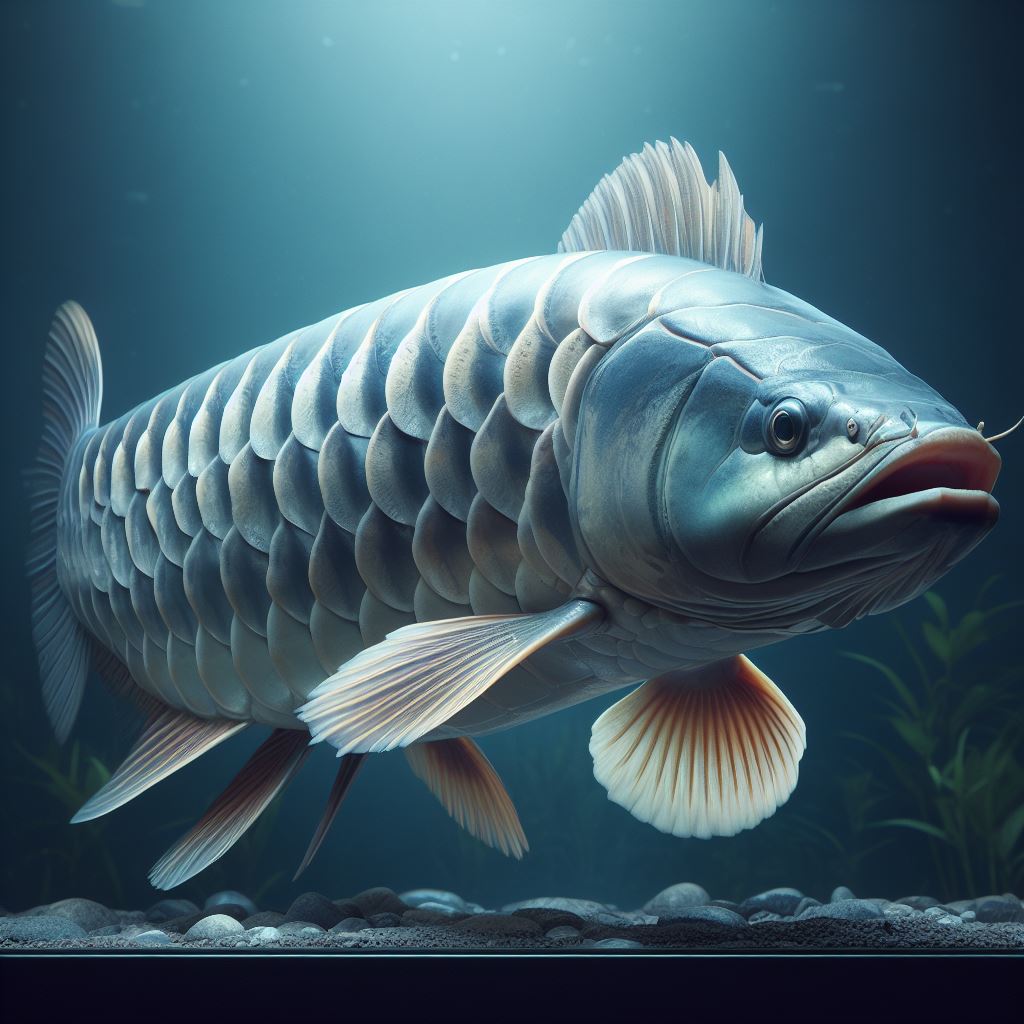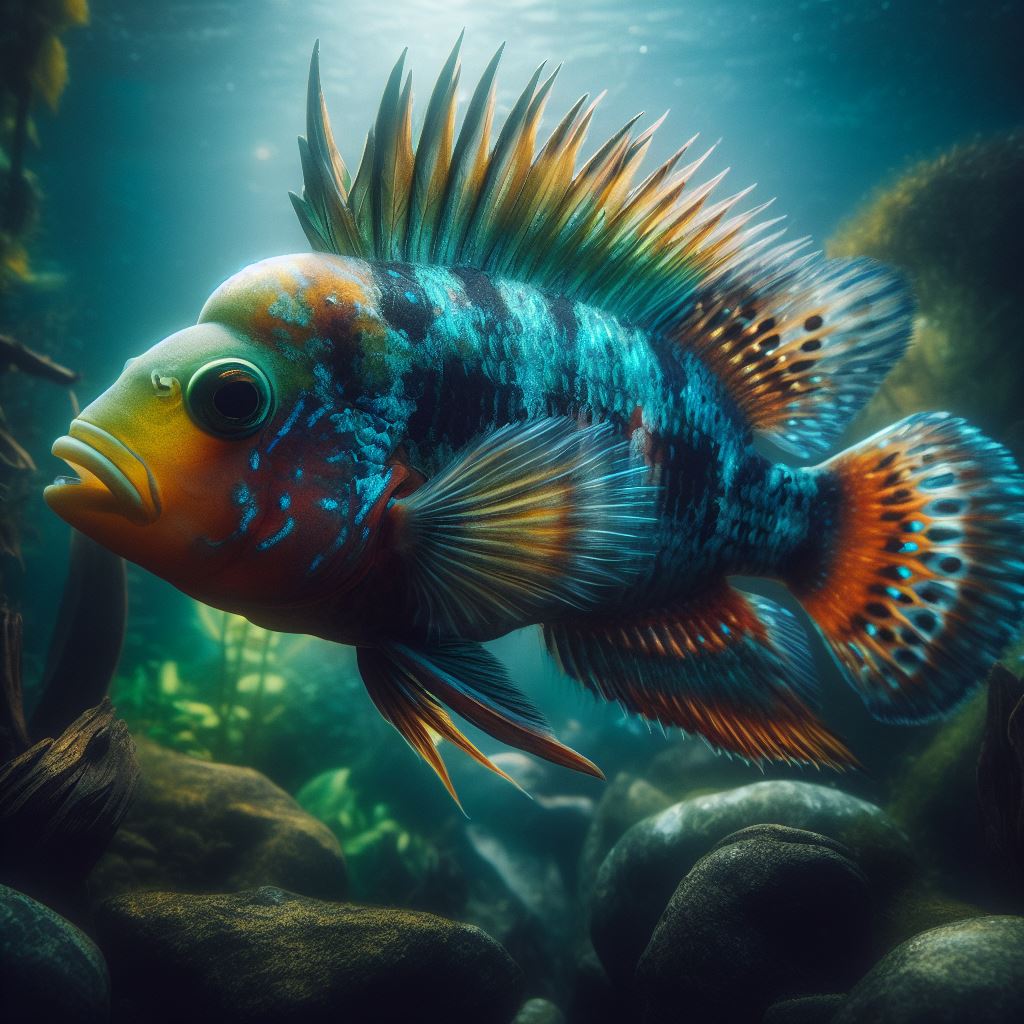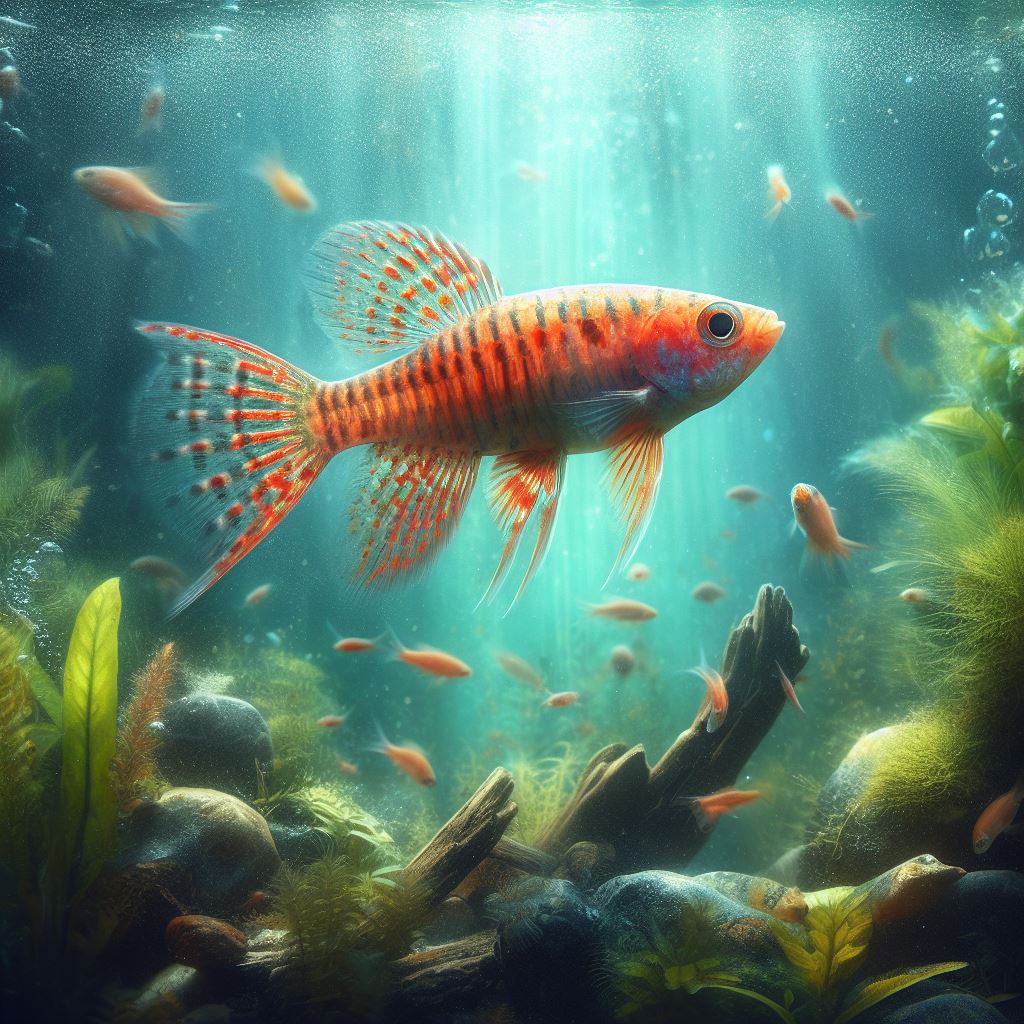Discus fish, the aristocrats of the aquarium, have a global fan following. In this comprehensive guide, we plunge into the fascinating realm of these aquatic wonders, from their origins in the Amazon to the art of creating the perfect aquatic haven. Whether you’re a newbie or a seasoned aquarist, this article opens the door to the world of discus fish and how to nurture them in your aquarium.
Understanding Discus Fish:
Discus fish, scientifically known as Symphysodon, are indeed fascinating creatures originating from the Amazon River basin in South America. They are renowned for their vibrant colors, unique disc-shaped bodies, and graceful swimming movements, making them highly prized among aquarium enthusiasts.
In their natural habitat, discus fish are found in the slow-moving waters of the Amazon River and its tributaries. These waters are typically warm, soft, and acidic, with dense vegetation and submerged branches providing natural hiding spots for the fish. The Amazon River basin, with its rich biodiversity and lush tropical environment, offers an ideal setting for these stunning fish to thrive.
Discus fish come in various color variations, including shades of red, blue, green, brown, and yellow. Their striking colors and intricate patterns are a result of selective breeding efforts by enthusiasts and breeders over the years. These captivating traits have made them popular choices for aquariums, allowing people to enjoy a piece of the Amazonian wilderness from the comfort of their homes.
Anatomy and Varieties:
the anatomy and varieties of discus fish are truly remarkable, showcasing the incredible diversity of nature and its evolutionary journey. Let’s delve a bit deeper into their anatomy and the fascinating varieties they come in:
1. Lateral Compression: Discus fish are characterized by their distinctive disc-shaped bodies, which are laterally compressed. This unique body shape allows them to navigate through the densely vegetated waters of their natural habitat with ease. Their flattened bodies also contribute to their graceful and agile swimming movements, making them a joy to watch in aquariums.
2. Color Varieties: One of the most captivating features of discus fish is the wide array of colors they come in. From fiery reds of the pigeon blood variety to serene blues of turquoise, and various shades of green, brown, and yellow, each variety displays a stunning palette of colors. These vibrant hues not only enhance the visual appeal of aquariums but also serve as a testament to the intricate artistry of nature.
Varieties and Patterns:
- Pigeon Blood Discus: Known for their intense red coloration, pigeon blood discus often have a white or yellowish face, creating a striking contrast.
- Turquoise Discus: These discus feature shades of blue and turquoise, ranging from pale sky blue to deep, vibrant hues.
- Checkerboard Discus: This variety displays a checkerboard pattern on its body, with alternating light and dark squares, resembling a chessboard.
- Leopard Skin Discus: Characterized by their spotted pattern, leopard skin discus have a leopard-like appearance, with spots of varying sizes and colors covering their bodies.
- Solid Color Discus: Some discus fish are of a solid color, such as solid red, blue, or yellow. These varieties showcase a uniform and intense coloration throughout their bodies.
Each variety represents years of selective breeding, where breeders have carefully chosen individuals with specific traits to produce these stunning fish. The artistry of nature is indeed reflected in the intricate patterns and vibrant colors displayed by these captivating discus fish varieties, making them highly sought after in the aquarium hobby.
Setting Up the Perfect Discus Aquarium:
- Tank Size: Discus fish, being relatively large and active swimmers, require a spacious tank to thrive. A larger tank provides them with ample space to swim and reduces territorial disputes among fish. A tank with a capacity of at least 50 gallons (around 190 liters) is recommended for a small group of discus fish. However, the bigger the tank, the better, as it allows for a more stable environment and dilutes waste more effectively.
- pH Levels and Water Hardness: Discus fish thrive in soft, acidic to slightly acidic water. Aim for a pH range between 6.0 to 7.0 and a water hardness of 1 to 8 dKH (degrees of carbonate hardness). Regular monitoring of these parameters and proper water testing kits can assist in maintaining optimal water conditions.
- Filtration System: A robust filtration system is essential for a discus fish tank. A canister filter or a sump filtration system is recommended, as they provide efficient mechanical, chemical, and biological filtration. Proper filtration helps remove impurities, toxins, and waste, ensuring a clean and healthy aquatic environment. Be mindful of not creating excessive water flow, as discus fish prefer calmer waters.
- Substrate and Décor: Use a fine-grained substrate like sand, which is gentle on the discus fish’s delicate fins. Provide plenty of plants, driftwood, and rocks to mimic their natural habitat. Live plants not only enhance the aesthetics but also contribute to the overall water quality by absorbing nitrates and providing hiding spots for the fish.
- Regular Water Changes: Frequent partial water changes are essential for discus fish tanks. Regular water changes help maintain water quality by removing accumulated waste and replenishing essential minerals. Aim for a 25-30% water change every week to keep the environment pristine.
Caring for Discus Fish:
- High-Quality Flakes and Pellets: Providing high-quality, specially formulated flakes and pellets designed for discus fish is essential. These commercially prepared foods are often fortified with essential vitamins and minerals necessary for the fish’s health. Look for products specifically labeled for discus fish, as they cater to their specific dietary requirements.
- Live and Frozen Foods: To mimic their natural diet and encourage vibrant coloration, it’s beneficial to supplement their staple diet with live or frozen foods. Discus fish relish live delicacies like bloodworms, brine shrimp, and daphnia. These foods are highly nutritious and provide essential proteins that contribute to their brilliant colors. You can find these live foods in most pet stores or breed them at home for a fresh supply.
- Variety is Key: Offering a variety of foods ensures that discus fish receive a diverse range of nutrients. Rotate their diet with a combination of high-quality flakes, pellets, and live, and frozen foods. This variety not only keeps them interested in their meals but also provides a broad spectrum of nutrients, promoting their overall health and vitality.
- Supplementary Vegetables: While discus fish are primarily carnivorous, occasionally offering blanched vegetables like zucchini or spinach can be beneficial. These provide fiber and can aid in digestion. However, vegetables should be given sparingly and removed if not consumed within a few hours to prevent water contamination.
By providing a balanced and varied diet, you not only enhance the vibrant hues of your discus fish but also support their overall health, ensuring that they thrive in their aquarium environment. Regular observation of their behavior and adjusting their diet based on their needs can lead to happy, healthy, and brilliantly colored discus fish.
Health and Disease Prevention:
understanding common ailments, recognizing their signs, and taking preventive measures are crucial aspects of discus fish care. Here’s an overview of health management and disease prevention for discus fish:
Common Ailments and Signs:
- Ich (White Spot Disease): Small white spots on the fish’s body and fins, along with scratching against objects, are signs of ich.
- Fin Rot: Torn or decaying fins indicate fin rot. It can result from poor water quality.
- Hole-in-the-Head Disease: Small pits or holes on the fish’s head are indicative of this disease, often caused by poor nutrition or water quality.
- Internal Parasites: Weight loss, abnormal feces, and a decrease in appetite can suggest internal parasites.
Preventive Measures:
- Quarantine New Fish: Always quarantine new discus fish for at least a few weeks before introducing them to your main tank. This helps prevent the spread of diseases.
- Maintain Water Quality: Regular water changes, proper filtration, and testing water parameters are fundamental. Clean water reduces stress and the likelihood of diseases.
- Balanced Diet: A nutritious diet boosts the immune system. Ensure a varied diet that meets their nutritional needs.
- Avoid Overcrowding: Overcrowding stresses fish, making them more susceptible to diseases. Follow stocking guidelines based on the tank’s size.
- Temperature Stability: Fluctuations in temperature can stress fish. Use a reliable heater to maintain a stable temperature.
- Observation: Regularly observe your fish. Changes in behavior, appetite, or appearance can indicate health issues.
Disease Treatment:
- Isolate Affected Fish: If you notice signs of illness, isolate the affected fish in a hospital tank to prevent the disease from spreading.
- Consult a Vet: If you’re unsure about the disease or its treatment, consult a vet experienced in fish health.
- Follow Medication Instructions: If medication is necessary, carefully follow the instructions. Remove carbon from the filter during treatment, as it can neutralize medications.
Healthy discus fish are a testament to a well-maintained aquatic environment. A combination of proper nutrition, excellent water quality, and attentive care significantly reduces the risk of diseases. Being proactive and observant allows you to address any potential issues promptly, ensuring your discus fish lead long, vibrant, and healthy lives.
Breeding Discus Fish:
Breeding discus fish is a rewarding experience that requires careful attention to their natural habitat and behavior. Here’s how you can create suitable breeding conditions for these splendid beings:
Mimicking Natural Habitat:
- Temperature and pH Changes: To simulate the rainy season, gradually lower the water temperature by a few degrees and slightly decrease the pH. This mimics the conditions that trigger breeding behavior in the wild.
- Soft Water: Discus fish prefer soft, acidic water for breeding. Ensure the water hardness is low, ideally around 1 to 4 dKH, and maintain a pH between 6.0 to 6.5.
Spawning Site:
- Flat Surfaces: Provide flat, vertical surfaces where the discus can lay their eggs. Many breeders use broad plant leaves, ceramic tiles, or specially designed-breeding cones. These surfaces offer a place for the fish to attach their eggs during spawning.
Breeding Behavior and Parental Care:
- Spawning Ritual: Discus fish are known for their elaborate courtship rituals, during which the pair cleans the chosen spawning site and engages in intricate dances.
- Egg Fertilization: Once the female lays the eggs, the male fertilizes them. Both parents take turns guarding the eggs and fanning them to ensure proper oxygenation. It’s essential not to disturb the breeding pair during this time.
Separating Parents from Fry:
- Parental Care: Discus parents exhibit excellent parental care. They protect and care for their fry by keeping them close and guarding them against threats.
- Separation: However, some breeders prefer to separate the parents from the fry to prevent accidental predation. If you choose to do so, transfer the parents to another tank after spawning and let them rest before reintroducing them to the main tank.
Feeding Fry:
- First Foods: Newly hatched discus fry are small and need proper nutrition. Offer them infusoria, micro-worms, or commercially available liquid fry food initially.
- Gradual Transition: As they grow, introduce baby brine shrimp and finely powdered high-quality fry food. Gradually transition them to larger foods as they mature.
Witnessing the entire process, from courtship to parental care, is not only a marvel of aquatic biodiversity but also a testament to the intricate life cycle of these splendid beings. By providing the right conditions and observing their natural behaviors, you can successfully breed and raise healthy discus fry, continuing the legacy of these magnificent fish.
Genetic Diversity and Selective Breeding: Selective breeding, a practice honed over generations, involves choosing specific individuals with desirable traits, such as vivid colors or unique patterns, to produce the next generation. Over time, this process has led to the development of distinct discus varieties, each with its charm and allure. Through careful selection, breeders have managed to enhance and stabilize these traits, resulting in the stunning discus fish varieties seen in aquariums today.
Hybrid Varieties and Ethical Considerations: The realm of hybrid discus varieties raises important ethical questions within the aquarium community. Hybrids are created by crossbreeding different discus species or varieties to produce new and unique combinations of colors and patterns. While this practice has led to the creation of visually striking fish, it has also sparked debates about the ethical implications of altering natural species through artificial means.
Where to Find Discus Fish:
a. Local Aquarium Stores: Local aquarium stores offer a tangible advantage. The health and hygiene of the discus fish, along with the store’s upkeep, are immediately apparent, providing peace of mind for the astute purchaser.
b. Online Platforms and Forums: The digital sphere unveils a multitude of reputable online retailers and aquarium forums. These platforms connect enthusiasts, fostering knowledge exchange and facilitating discus fish transactions. Vigilance and research are the keys to ensuring secure purchases.
c. Aquarium Shows and Auctions: Participating in aquarium exhibitions and auctions immerses enthusiasts in a world of expertise. Here, breeders unveil their most exquisite specimens, and auctions offer a rare chance to possess unique discus fish. These events epitomize the camaraderie within the aquarium community.
Conclusion:
Dedicating your aquarium to discus fish elevates it into a living masterpiece. Beyond mere aesthetics, it’s a pledge to conserve these magnificent creatures. By unraveling their natural behaviors, crafting an idyllic habitat, and sourcing them responsibly, you embark on a voyage of appreciation and conservation.
Remember, this journey transcends the visual splendor. Caring for discus fish echoes the preservation of nature’s marvels. It beckons you to explore and comprehend the profound beauty of the aquatic realm. Dive in, explore, and create your captivating aquatic utopia in the enchanting world of discus fish.

